The Cornell Lab Bird Academy › Discussion Groups › Nature Journaling and Field Sketching › The Power of Comparison
-
I really learned a lot from my caparison study of two very opposite looking trees. They were both growing in a wooded area ,one by a pond. Because its early spring and no fancy leaves etc. to study , it forced me to really take a good look at the tree itself. I could really see some of the similarities and differences in bark , branch formation, height, just to mention a few thing. The up close "face to face" exercise with the trees was very interesting. I still really need to figure out how to manage drawing and descriptive data in the space I will have in my journal. I'm working on that.
-

-
I really like your drawing. In your drawing I can see why the Muscle Tree is called a muscle tree as I can see the smooth waves and ridges of the tree. Same with the Shag Bark Hickory Tree. In the drawing it lives up to it's name.
-
-

-
This is the first photo I have uploaded. I could not figure out how to rotate the image. Sorry. Daffodil and hyacinths have recently bloomed in my backyard. I love the purple and yellow next to each other in the garden, and who could resist the scent of hyacinths? Seeing the two of these flowers blooming is a sure sign of spring in my garden.
-
-
Spring is an interesting time to do nature comparisons on the prairies of Colorado - not much is growing yet, at least that's what I thought at first. I ended up finding several things I could compare, noting the time of year. Future comparisons in different seasons will be interesting. I liked focusing on the small part of my subject, but struggled with the bigger picture, at least with the drawing piece. I also felt like I was too wordy. It was a great exercise putting into practice all that I've learned so far. The possibilities are endless!

-
 When I first looked at these two leaves they seemed very similar to me, but after drawing and comparing them, I noticed differences in may things, such as the shape of the points and veins. I also noticed many subtle differences in color.
When I first looked at these two leaves they seemed very similar to me, but after drawing and comparing them, I noticed differences in may things, such as the shape of the points and veins. I also noticed many subtle differences in color. -
There is not much growing here yet, still snow on the ground, so I used a couple of wildflower pictures my husband emailed me. I found that comparison drawing really made you look at things at a deeper level than just drawing a single thing would; kind of puts you in the mindset of looking for differences and similarities.

-
Not much green outside this time of year except for evergreens...

-

-
I was able to get more out of this comparison study than I would have by studying a single cactus sample. Comparing two similar cacti species side-by-side highlights the similarities while also emphasizing the differences. I created a Venn Diagram and used it to note the characteristics of each plant and its overlap with one another. This way I did not feel confined by the remaining space on the sketched page and it was a new way for me to try to document my observations with attention to pattern, form/function, change, etc. A second (or third!) page may be required for all the questions that are generated. And a whole other writing book for the answers! There is so much to learn... and it is a wonderful thing.

-

-
Comparison of dried grasses, miscanthus and river oats. I enjoyed observing the details of the grasses, the colors, textures and overall shapes.
-
-
Helen de Groot, Virginia 2/12/21
 The temperature is in the 20’s and the ground is covered with snow. Though I know that the hellebore is in bloom under the snow and chick weed is up, I opted to compare a couple of house plants. I’m not sure I will worry about balancing drawing, writing, and recording. I will do all three, but I want to draw. I’m not sure anyone other than myself will ever look at it. It is relaxing for me to draw. I do realize that I will learn a lot through this experience.
The temperature is in the 20’s and the ground is covered with snow. Though I know that the hellebore is in bloom under the snow and chick weed is up, I opted to compare a couple of house plants. I’m not sure I will worry about balancing drawing, writing, and recording. I will do all three, but I want to draw. I’m not sure anyone other than myself will ever look at it. It is relaxing for me to draw. I do realize that I will learn a lot through this experience. -
 1) It was too cold to venture outside today (7F!), so I chose two of my indoor cacti for the comparison study. Even though I've owned these two plants for years, studying them in the context of the comparison study was very useful for noticing new details. I was surprised that the spikes on the two were actually opposite- the left plant seems more concerned with protecting from the top (w/larger, thicker spikes directed upwards) whereas the right cactus has it's largest spikes pointing down. I wondered if that might be due to different predators for each type of cactus. I learned that there is so much we don't truly "see" on a day to day basis.
1) It was too cold to venture outside today (7F!), so I chose two of my indoor cacti for the comparison study. Even though I've owned these two plants for years, studying them in the context of the comparison study was very useful for noticing new details. I was surprised that the spikes on the two were actually opposite- the left plant seems more concerned with protecting from the top (w/larger, thicker spikes directed upwards) whereas the right cactus has it's largest spikes pointing down. I wondered if that might be due to different predators for each type of cactus. I learned that there is so much we don't truly "see" on a day to day basis. -
Jessica... I also had a day indoors with my cacti. I started a little terrarium a couple months ago. My cacti are growing like crazy. I thought they were supposed to be dormant during the winter months! Indoor plants have certainly made nature journalling easier for those of us who live in colder climes. Hands get too cold, even with gloves, and our fingers stiffen quickly that our sketches would quickly become abstract and field notes would be cryptic! Besides, as you mentioned above, there is so much we don't see on a day-t0-day basis and this is a wonderful opportunity to develop newly appreciate the life within our four walls while we build observation skills. Cheers! Laurie
-
-

-
I am having trouble figuring out how to add sentences above/below my inserted pictures? Any suggestions? Thanks!
-
ElizabethBird AcademyTo add text above your picture, type the text in the reply text editor before hitting the "Insert Image" button. To add text below your picture, insert your image first, then press Enter/return or navigate to below the image with your cursor before typing the text. If you still have trouble, adding text and images in separate posts works, too!
-
-

-
 I compared pine trees - two different types. It as interesting to see the differences once you started to compare. I made an observation while comparing that I don't think I had really registered before - the pine tree on the left had needles along all aspects of the branch, whereas the one on the right had a lot of bare branch exposed. I didn't have as much time as I wanted to really get into more detail but I absolutely love this method and plan to do this more often!
I compared pine trees - two different types. It as interesting to see the differences once you started to compare. I made an observation while comparing that I don't think I had really registered before - the pine tree on the left had needles along all aspects of the branch, whereas the one on the right had a lot of bare branch exposed. I didn't have as much time as I wanted to really get into more detail but I absolutely love this method and plan to do this more often! -
 This was my first day using this journal. I really enjoyed the lessons and sitting at the dining room table since it was cold outside. The feeder is just outside the window and is a constant source of entertainment.
This was my first day using this journal. I really enjoyed the lessons and sitting at the dining room table since it was cold outside. The feeder is just outside the window and is a constant source of entertainment. -
Really enjoyed my first comparison study. Have often looked at bladderpod seeds, dry on the ground, as well as those still hanging on plant (some dry and others various shades of green), but never paid close attention. By comparing pods, became more aware of the process of change. I didn't really make use of numbers except as labels; in the future I think I will be more likely to consider using drawing, writing and recording numerical data; but, I think the balance will vary. Thank you to all of you who have shared, especially photos of your journal pages; they're ALL inspirational. Whoops. Noticed dated 1/14/2020 instead of 1/14/2021. Happy New Year!

-
This exercise encouraged me to look at the two plants very carefully. While on the surface, the orchid and amarylis differ greatly, they have similarities that became obvious as I observed them carefully. I enjoyed cataloging their parts!

-
I find that I spent so much time recording that I don't lave enough room for the sketching. I discovered that I enjoyed referring back to the lesson points and reflecting on comparisons. It stretched my thinking.
-
It is January, so there aren't too many flowers in the garden. I did find a Mimulus and Yarrow - the focus of my comparison study. The provocations above helped focus my observations. Thank you!

-

-

-
 Did this in ink for better visibility. One similarity I didn't note down is the irregular shape of the shells. Need to improve in capturing their curvature along different axes.
Did this in ink for better visibility. One similarity I didn't note down is the irregular shape of the shells. Need to improve in capturing their curvature along different axes. -

 I did the exercise two times and was amazed at how much I missed on the first attempts! This is very useful.
I did the exercise two times and was amazed at how much I missed on the first attempts! This is very useful.
Read More:
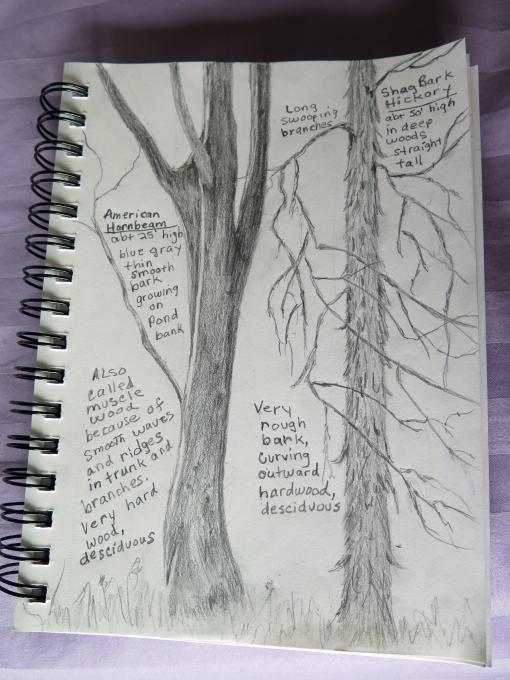
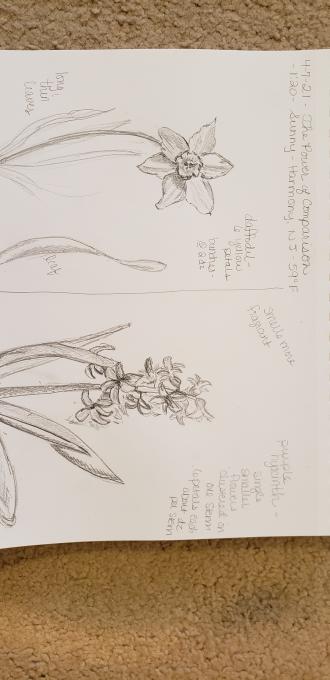

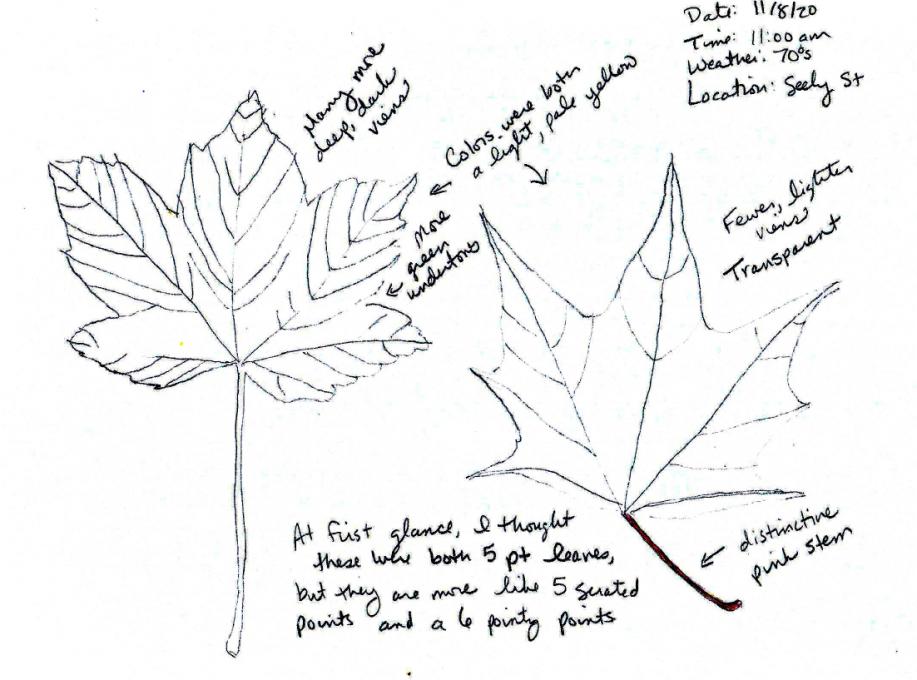 When I first looked at these two leaves they seemed very similar to me, but after drawing and comparing them, I noticed differences in may things, such as the shape of the points and veins. I also noticed many subtle differences in color.
When I first looked at these two leaves they seemed very similar to me, but after drawing and comparing them, I noticed differences in may things, such as the shape of the points and veins. I also noticed many subtle differences in color. 
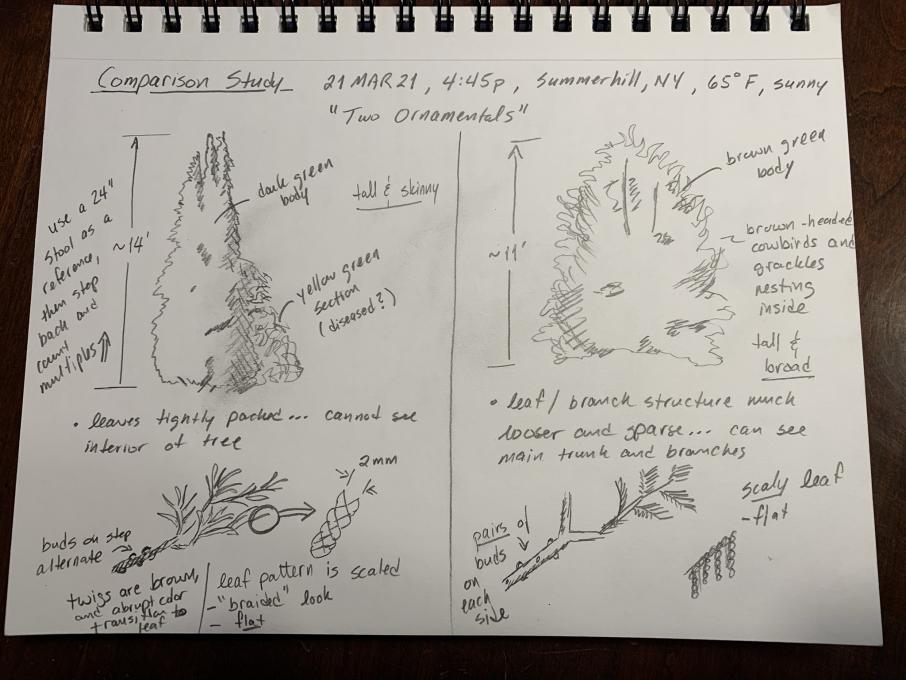
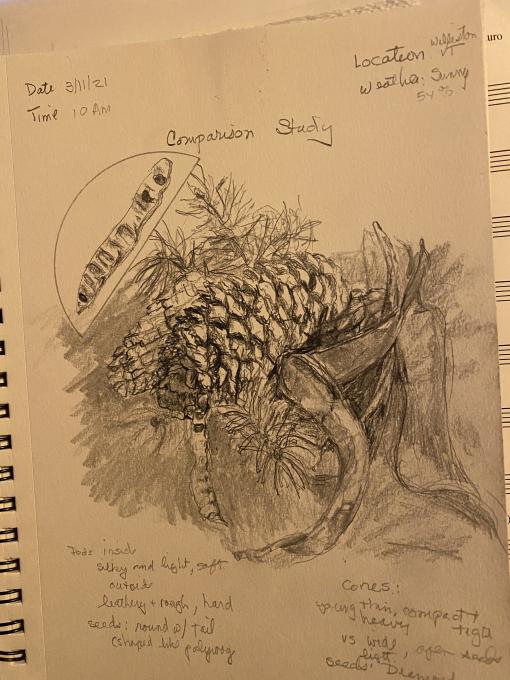
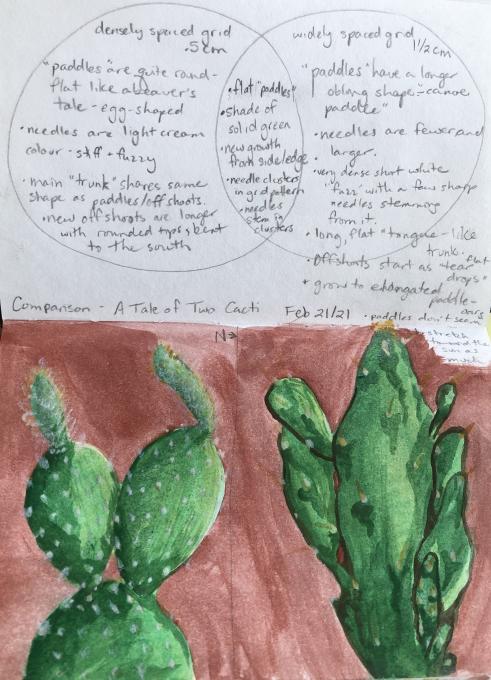

 The temperature is in the 20’s and the ground is covered with snow. Though I know that the hellebore is in bloom under the snow and chick weed is up, I opted to compare a couple of house plants. I’m not sure I will worry about balancing drawing, writing, and recording. I will do all three, but I want to draw. I’m not sure anyone other than myself will ever look at it. It is relaxing for me to draw. I do realize that I will learn a lot through this experience.
The temperature is in the 20’s and the ground is covered with snow. Though I know that the hellebore is in bloom under the snow and chick weed is up, I opted to compare a couple of house plants. I’m not sure I will worry about balancing drawing, writing, and recording. I will do all three, but I want to draw. I’m not sure anyone other than myself will ever look at it. It is relaxing for me to draw. I do realize that I will learn a lot through this experience. 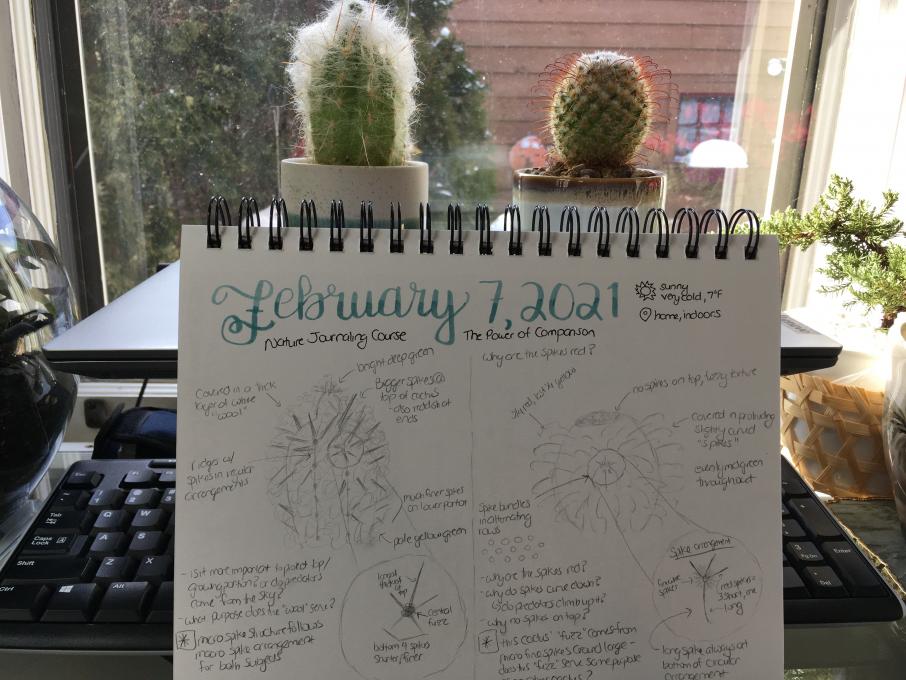 1) It was too cold to venture outside today (7F!), so I chose two of my indoor cacti for the comparison study. Even though I've owned these two plants for years, studying them in the context of the comparison study was very useful for noticing new details. I was surprised that the spikes on the two were actually opposite- the left plant seems more concerned with protecting from the top (w/larger, thicker spikes directed upwards) whereas the right cactus has it's largest spikes pointing down. I wondered if that might be due to different predators for each type of cactus. I learned that there is so much we don't truly "see" on a day to day basis.
1) It was too cold to venture outside today (7F!), so I chose two of my indoor cacti for the comparison study. Even though I've owned these two plants for years, studying them in the context of the comparison study was very useful for noticing new details. I was surprised that the spikes on the two were actually opposite- the left plant seems more concerned with protecting from the top (w/larger, thicker spikes directed upwards) whereas the right cactus has it's largest spikes pointing down. I wondered if that might be due to different predators for each type of cactus. I learned that there is so much we don't truly "see" on a day to day basis. 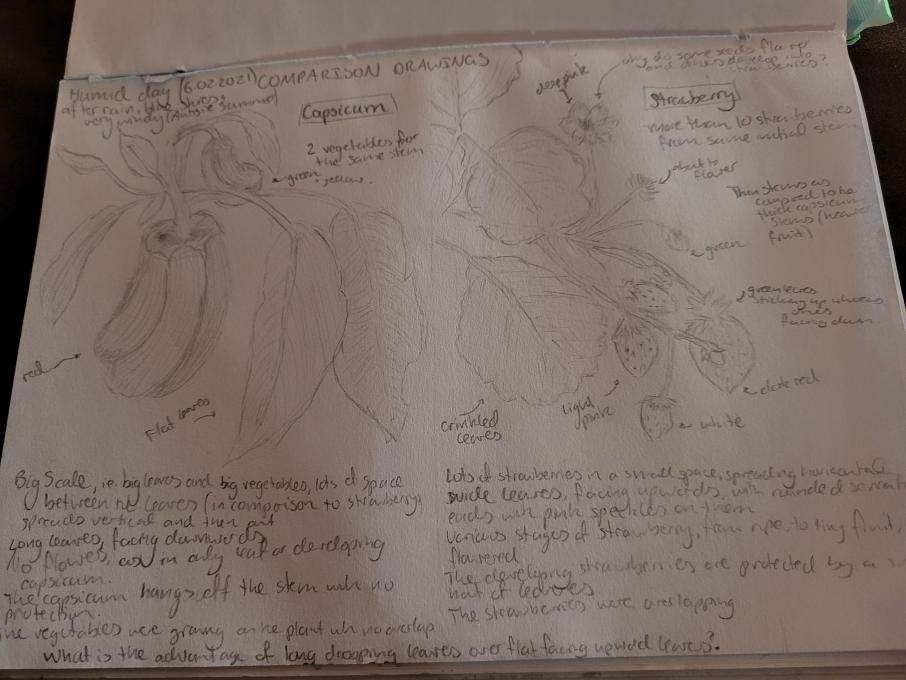

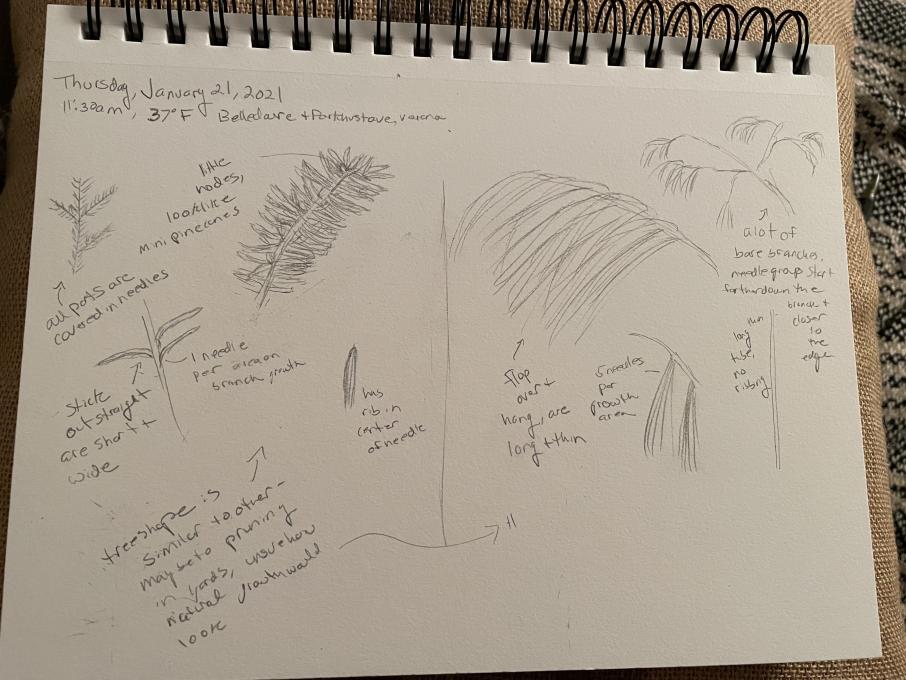 I compared pine trees - two different types. It as interesting to see the differences once you started to compare. I made an observation while comparing that I don't think I had really registered before - the pine tree on the left had needles along all aspects of the branch, whereas the one on the right had a lot of bare branch exposed. I didn't have as much time as I wanted to really get into more detail but I absolutely love this method and plan to do this more often!
I compared pine trees - two different types. It as interesting to see the differences once you started to compare. I made an observation while comparing that I don't think I had really registered before - the pine tree on the left had needles along all aspects of the branch, whereas the one on the right had a lot of bare branch exposed. I didn't have as much time as I wanted to really get into more detail but I absolutely love this method and plan to do this more often!  This was my first day using this journal. I really enjoyed the lessons and sitting at the dining room table since it was cold outside. The feeder is just outside the window and is a constant source of entertainment.
This was my first day using this journal. I really enjoyed the lessons and sitting at the dining room table since it was cold outside. The feeder is just outside the window and is a constant source of entertainment. 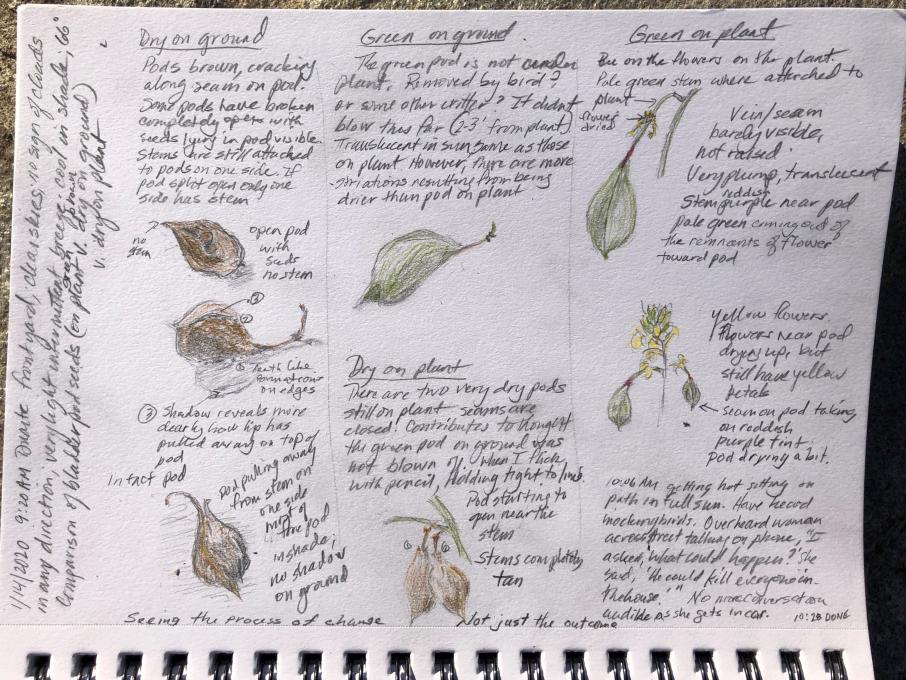
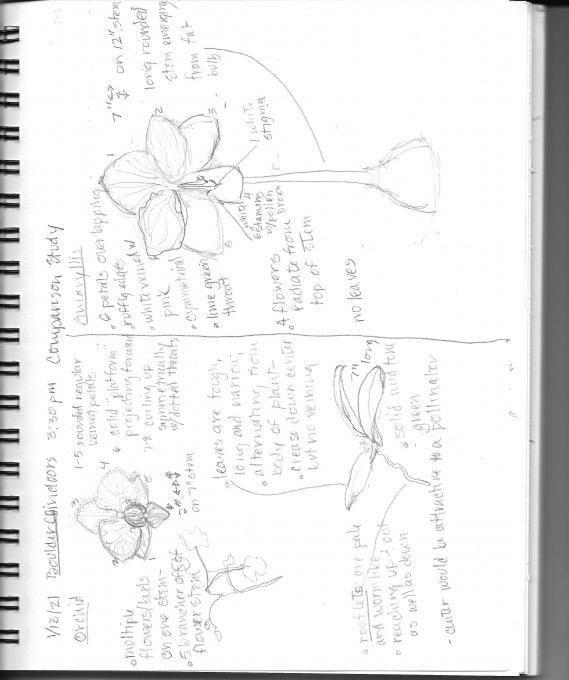

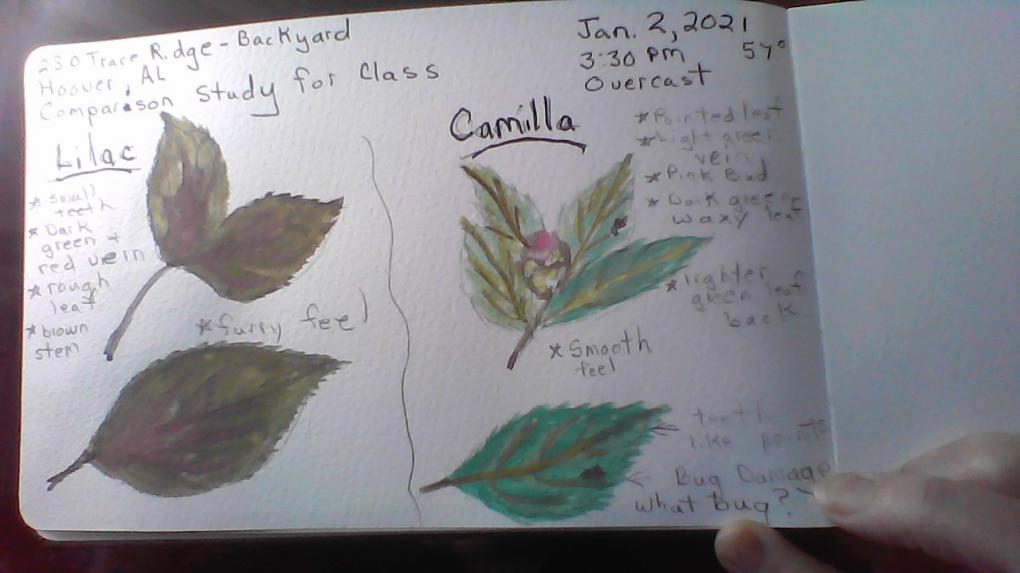

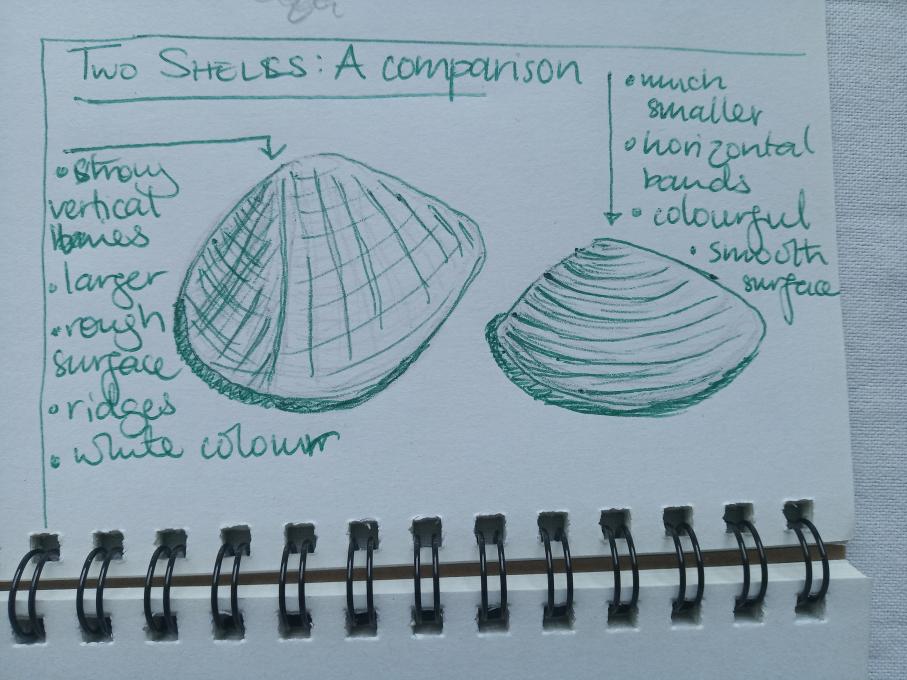 Did this in ink for better visibility. One similarity I didn't note down is the irregular shape of the shells. Need to improve in capturing their curvature along different axes.
Did this in ink for better visibility. One similarity I didn't note down is the irregular shape of the shells. Need to improve in capturing their curvature along different axes. 
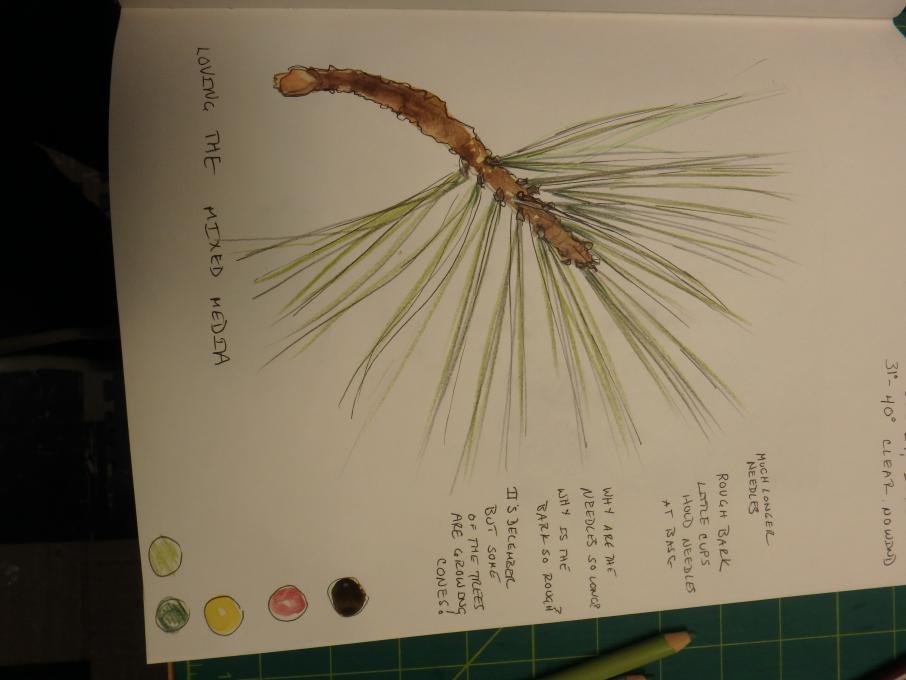 I did the exercise two times and was amazed at how much I missed on the first attempts! This is very useful.
I did the exercise two times and was amazed at how much I missed on the first attempts! This is very useful.